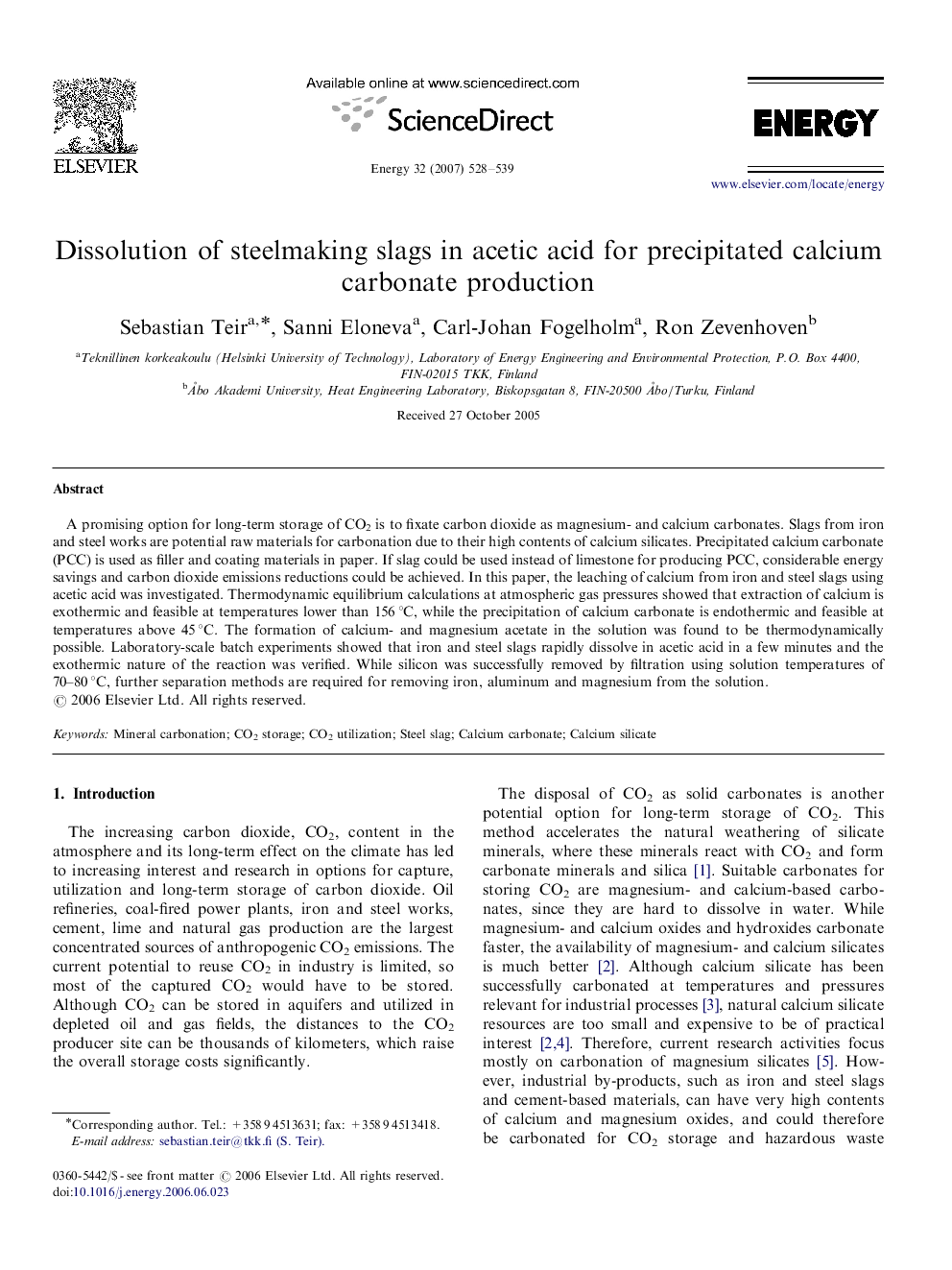| Article ID | Journal | Published Year | Pages | File Type |
|---|---|---|---|---|
| 1736069 | Energy | 2007 | 12 Pages |
A promising option for long-term storage of CO2 is to fixate carbon dioxide as magnesium- and calcium carbonates. Slags from iron and steel works are potential raw materials for carbonation due to their high contents of calcium silicates. Precipitated calcium carbonate (PCC) is used as filler and coating materials in paper. If slag could be used instead of limestone for producing PCC, considerable energy savings and carbon dioxide emissions reductions could be achieved. In this paper, the leaching of calcium from iron and steel slags using acetic acid was investigated. Thermodynamic equilibrium calculations at atmospheric gas pressures showed that extraction of calcium is exothermic and feasible at temperatures lower than 156 °C, while the precipitation of calcium carbonate is endothermic and feasible at temperatures above 45 °C. The formation of calcium- and magnesium acetate in the solution was found to be thermodynamically possible. Laboratory-scale batch experiments showed that iron and steel slags rapidly dissolve in acetic acid in a few minutes and the exothermic nature of the reaction was verified. While silicon was successfully removed by filtration using solution temperatures of 70–80 °C, further separation methods are required for removing iron, aluminum and magnesium from the solution.
